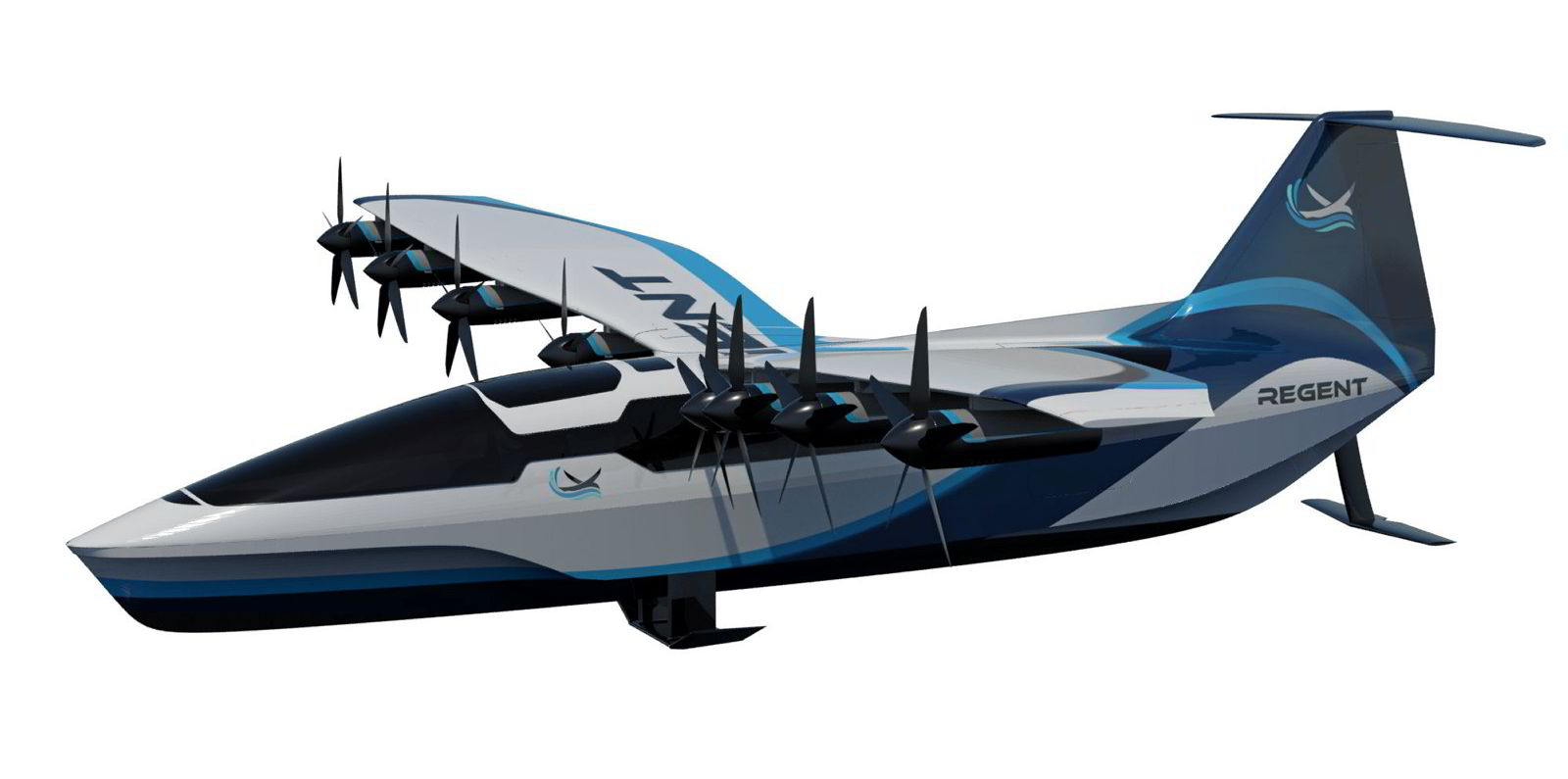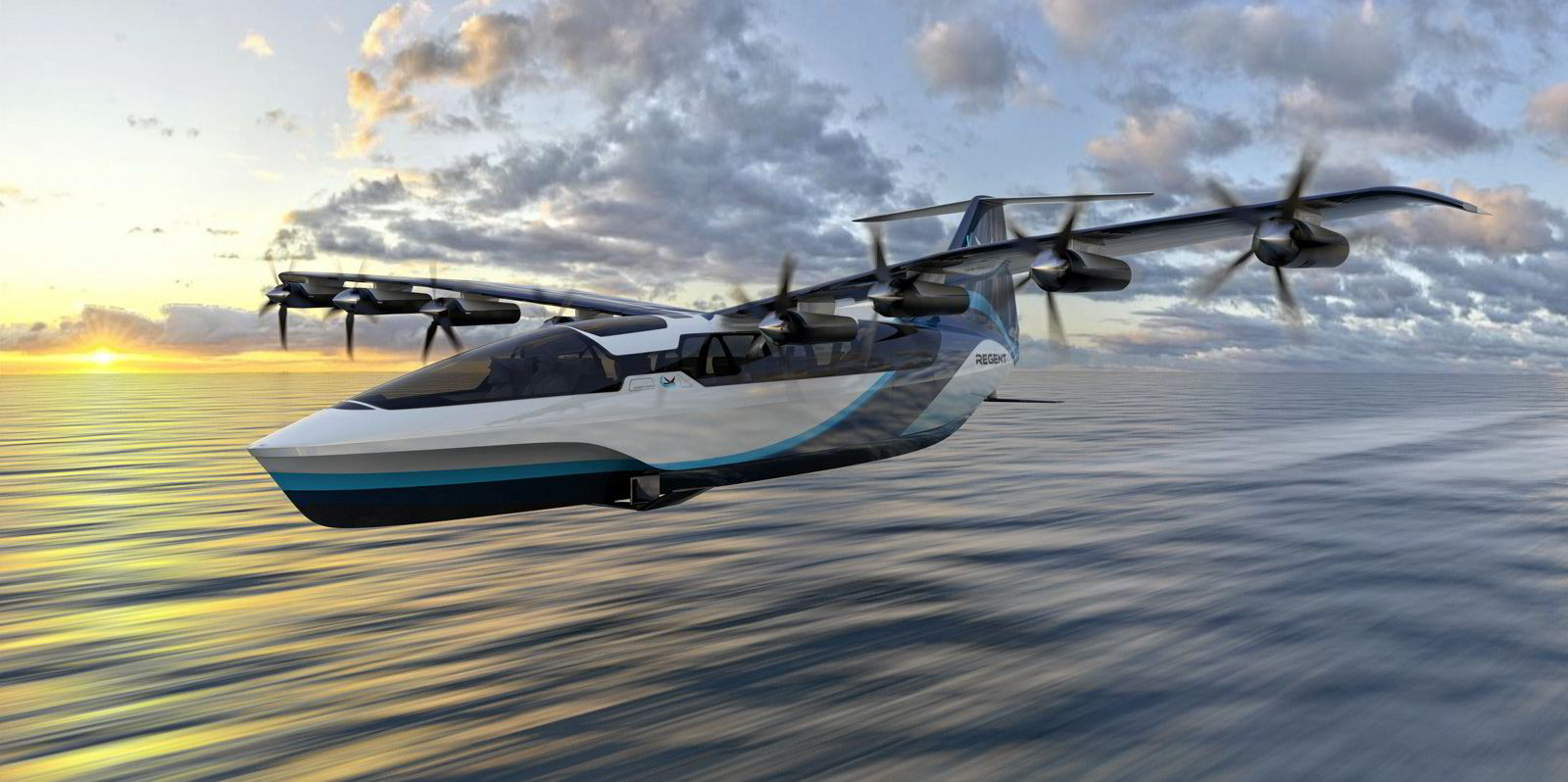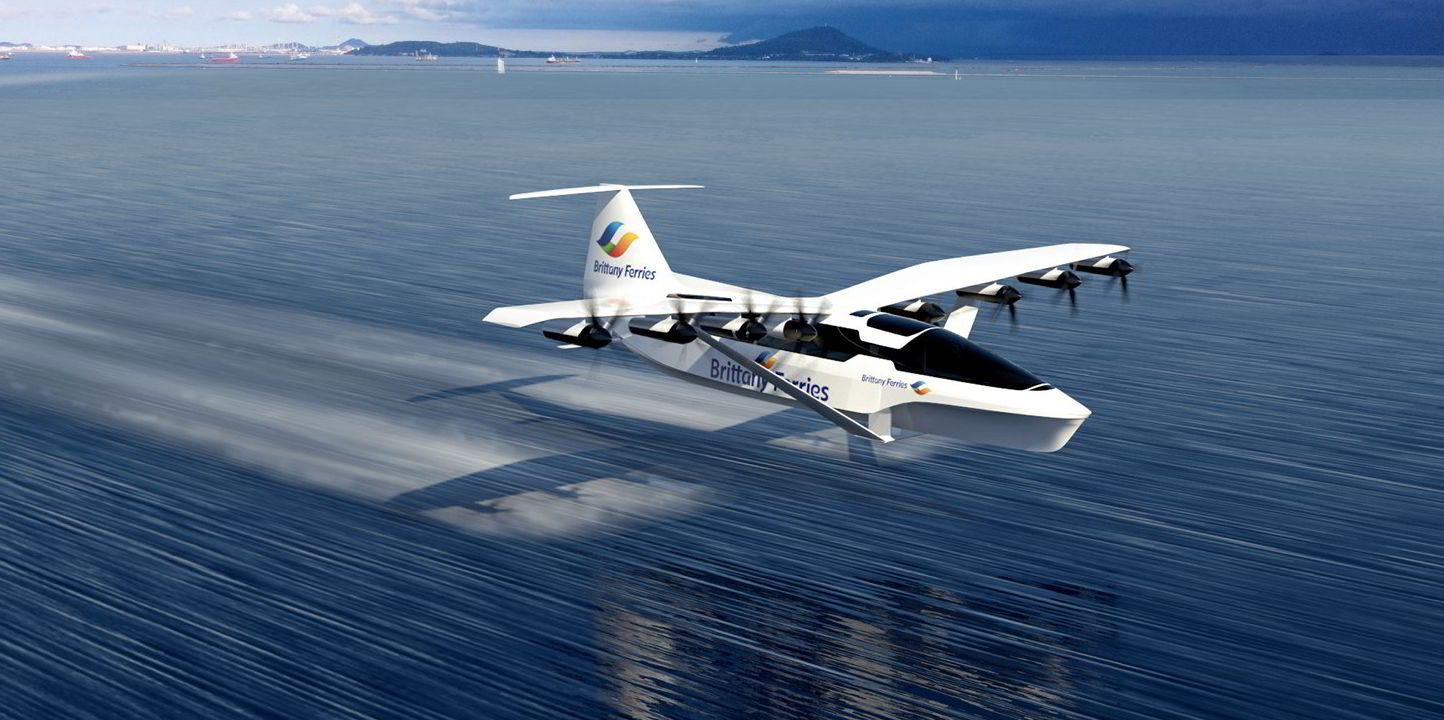A pioneering passenger craft that will float, hydrofoil and then fly, but not high enough to be considered an airplane, has won preliminary maritime approval.
Classification society Bureau Veritas granted the approval-in-principal of Regent Craft’s Viceroy, a fully-electric, 12-passenger vehicle known as a wing-in-ground effect (WIG) seaglider, which will operate without emissions on routes typically plied by ferries or commuter airlines.
“It’s very exciting to see shipping and aviation come together,” said Daniel Holmes, the Connecticut-based business development manager for Bureau Veritas in North America.
He thinks seagliders will be a game changer.
“Living here in New England, I know what it is to drive from New York to Boston on I95,” Holmes said, referring to the perennially traffic-clogged Interstate 95 highway. “Imagine doing that in a fraction of the time, and with a much, much smaller environmental footprint.”
The approval in principal, which comes after 10 months of work with Bureau Veritas’ marine and offshore division, is a key milestone for the Viceroy, the first of two seaglider designs planned by Regent.
The Boston company, which is also planning the 100-passenger Monarch, has a backlog of $7bn in provisional orders from a mix of ferry operators and airlines, including France’s Brittany Ferries, Croatia’s SplitExpress, Mesa Airlines and Southern Airways Express.
Although they fly above the surface of the water, some types of WIGs are maritime vessels from a regulatory standpoint, covered by the US Coast Guard rather than the Federal Aviation Administration (FAA), and globally by the International Maritime Organization rather than the International Civil Aviation Organization (ICAO).
In the maritime realm
Seagliders fit within the maritime domain by remaining within a wingspan of the water’s surface for their entire journey, taking advantage of the same aerodynamic “ground effect” that pelicans use when they fly low.
Operationally, the Regent seagliders will resemble vessels as well, and they will have specially trained master mariners rather than pilots, with flight controls computerised.
“We’re dock-to-dock over water only. So operationally, we’re really just a very fast boat,” Regent chief executive Billy Thalheimer told TradeWinds.

An aerospace engineer who got his sea legs first as a competitive sailor in high school before his career in the aviation and space industries, Thalheimer worked on electric air taxis at Aurora Flight Sciences before it was taken over by Boeing, where he continued on until October 2020.
Work on the eVTOL passenger air vehicle helped lead him, alongside Regent co-founder and fellow Aurora alumnus Michael Klinker, to see some of the “hard sticking points” of electric air vehicles, including aviation certification and the limited range of batteries.

The Viceroy is a wing-in-ground effect seaglider that will sail from dock and ultimately fly its routes at no more than a wingspan of the water surface.
Developer: Regent Craft
Passengers: 12
Crew: 2
Fuel: 100% electric
Range: 160 nautical miles (300 km) at battery end of life
Cruising speed: 160 knots (300 kph)
Payload: 1,600 kg in cargo configuration
“The initial brainchild was: Can we offer the same sort of electric, low-cost, low-noise, low-emission mobility, but do so at regional ranges and through a different certification channel?” Thalheimer said.
The Regent team began by checking with the Coast Guard and the FAA to confirm the precedents set by the IMO and ICAO in placing seagliders within the jurisdiction of maritime regulators.
‘Where do I sign up’
Bureau Veritas’ Holmes said that when he was first introduced to Regent’s seagliders plans, he had a “geek out” moment.
“My first impression was, ‘Where do I sign up?’” he said.
Now that he has had more exposure to the project, he said he sees it as a concept with “serious legs, both commercially and technically”.
He acknowledged the challenges of classifying a flying vehicle for maritime-focused experts.
“We want as an organisation we want to learn, we have key missions of safety that we have to fulfil, to our clients and to society,” Holmes said. “And we can only do that if we are pushing the boundaries of technology and our understanding.”
With approval in principal complete, Bureau Veritas is carrying out design appraisal. Regent is aiming for a Coast Guard design basis agreement, the first key milestone for approval by US regulators, in the autumn, on the path toward certification under the US flag.
The first Viceroy seaglider is planned for operations in 2025, with commuter airline operator Southern Airways Express first in the queue.
Regent is testing a quarter-scale prototype that is aimed at proving the way the Viceroy will operate — floating to and from dock, hydrofoiling and then flying.
“This is one of the first designs that is coupling hydrodynamic controls with aerodynamic controls,” Thalheimer said.
“We’re demonstrating really fantastic wave tolerance of this vehicle now, and plan to be demonstrating that foil-to-flight transition, and enter the wing-in-ground flight aspect of our sea trials regime shortly.”





